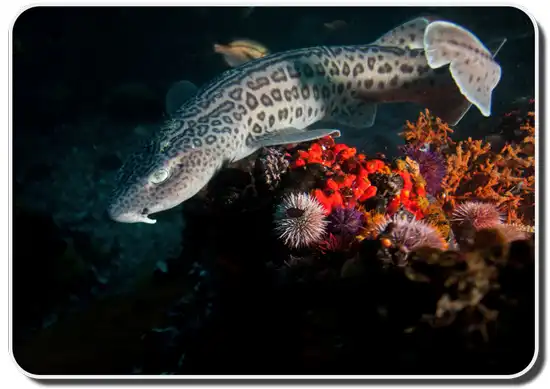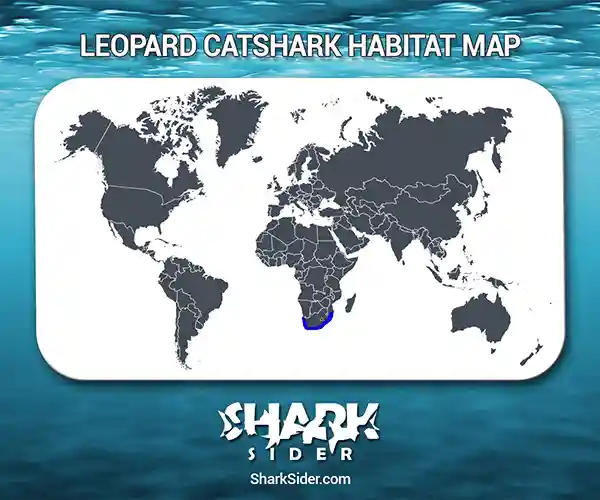 The leopard catshark is a bottom dweller endemic to South African waters. They have an appealing appearance with several types of morphs.
The leopard catshark is a bottom dweller endemic to South African waters. They have an appealing appearance with several types of morphs.
Leopard Catshark Scientific Classification |
|
| Kingdom | Animalia |
| Phylum | Chordata |
| Class | Chondrichthyes |
| Order | Carcharhiniformes |
| Family | Scyliorhinidae |
| Genus | Poroderma |
| Scientific Name | P. pantherinum |
Description
These sharks reach a maximum length of 33 inches and a maximum weight of 7.1 lb, with males slightly larger than females. Their bodies are compressed, tapering off towards the tail. They have a short snout, horizontally oval eyes, and a mouth shaped like an arch. Inside the mouth are 18–30 rows of teeth in the upper jaw and 13–26 tooth rows in the lower one.
The two dorsal fins are much lower down their bodies, the pectoral fins are broad, and the pelvic fins form an “apron” over their genitalia.
While all these sharks have a leopard-like pattern, the exact coloration and markings can vary greatly, with four known forms or morphs observed – ‘typical’ (standard leopard rosettes and broken lines), ‘marleyi’ (large round spots), ‘salt-and-pepper’ (closely packed dots), ‘melanistic’ (almost wholly black upper surface with irregular patterns like stripes and spots). Most members of this species are a combination of these four. Coloration depends on growth and location, as the juveniles tend to have black spots, and those living off the Eastern Cape and KwaZulu-Natal tend to be of the ‘marleyi’ and ‘salt-and-pepper’ pattern.
Where do they live
Map Of The Leopard Catshark’s Habitat

These catsharks live around South Africa’s coasts, from Saldanha Bay in the west to the Tugela River in the east. Bottom-dwelling by nature, this shark swims in the intertidal zone up to 66 ft, though there have been reports at 840 ft.
The leopard catshark prefers kelp forests, rocky reefs, and sandy flats off beaches.
Behavior
Hunting
After resting during the day inside caves or crevices, this shark starts foraging at night. Its diet consists primarily of small bony fish, followed by cephalopods, crustaceans like the Cape rock lobster, and polychaete worms. There have been sightings where this shark attacks cuttlefish and octopi by biting and twisting off their tentacles to reduce their mobility.
This shark adopts a diurnal hunting habit during the spawning season of the chokka squid, lying in wait among the egg masses and attacking the female when she descends to lay further eggs.
Reproductive
These sharks are oviparous, laying two rectangular egg capsules. After hatching, the newborns are 4.3 inches long. Sexual maturity is observed at 19–26 inches in males and 17–25 inches in females when they are about ten years old. On average, these sharks live for 15-19 years, but the exact lifespan remains unknown.
Adaptations
If threatened by predators like the broadnose sevengill shark, this shark curls into a ring, covering its head with its tail.
Interactions with humans
Harmless to humans, the leopard catshark is quite common in public aquaria due to its docile nature and robust build. It isn’t a priority catch for fisheries but is often killed off to prevent them from “stealing bait”. Despite this, the IUCN lists this shark as “Least Concern” or “LC”.
